
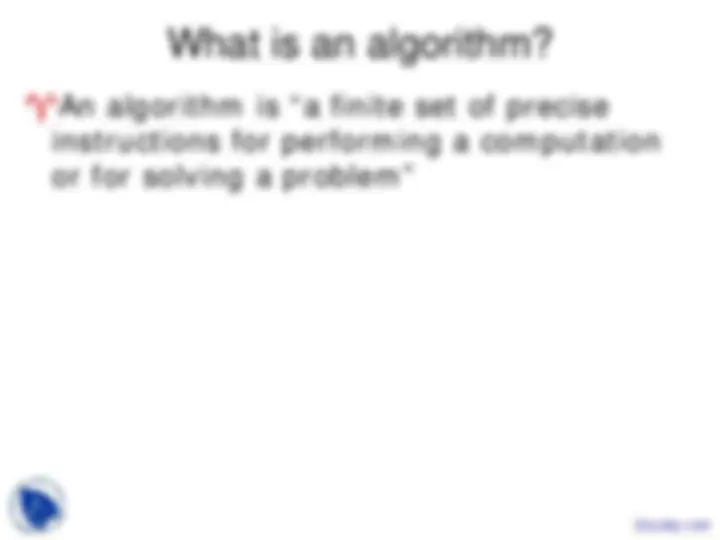
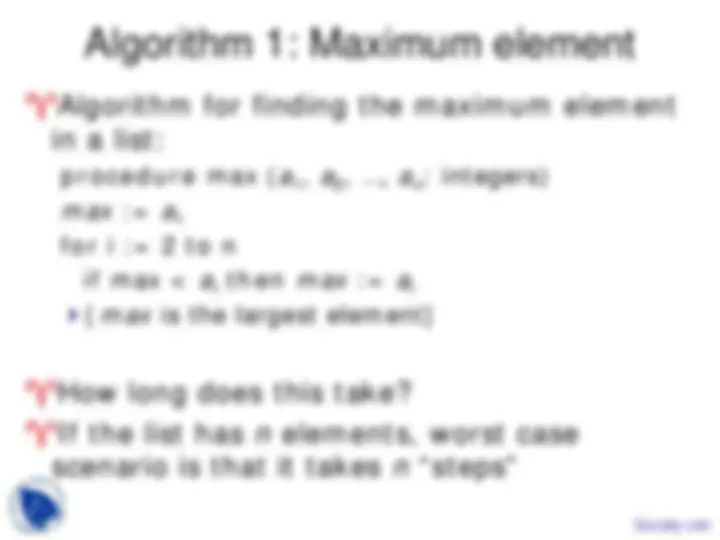
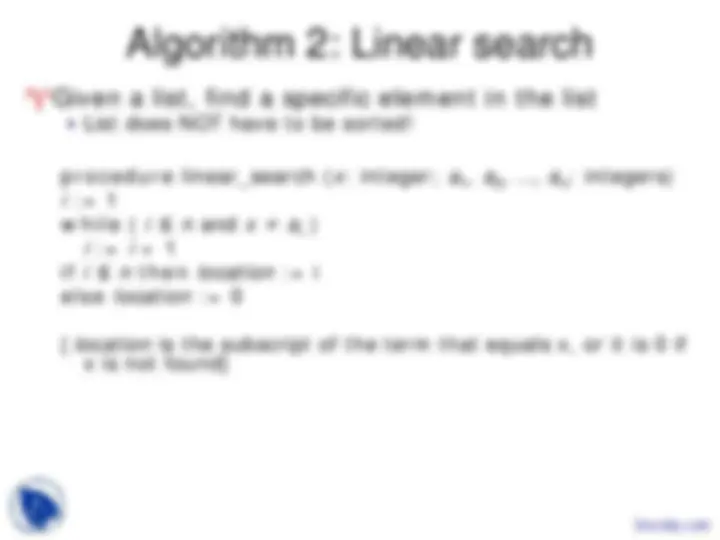

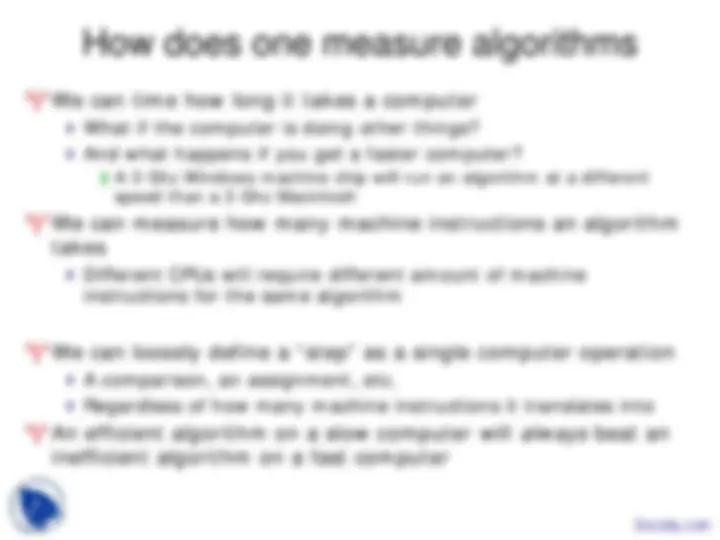

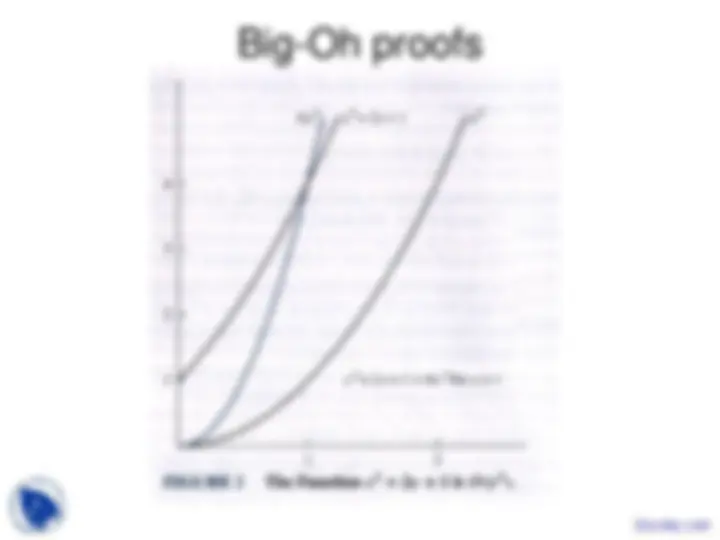

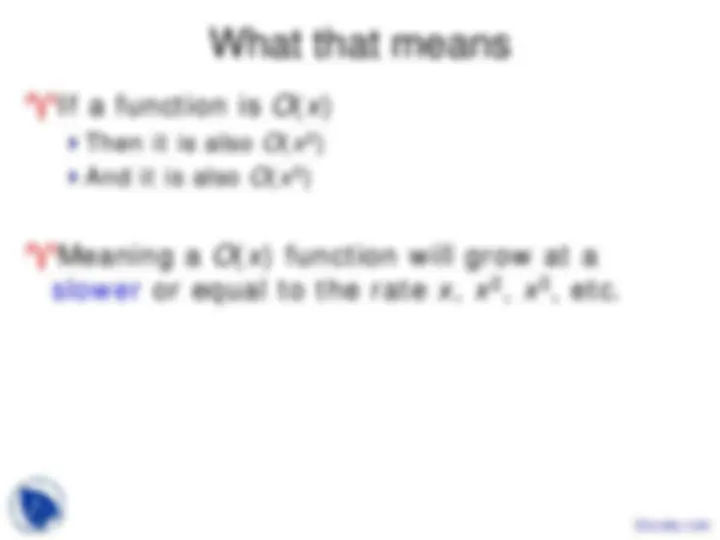
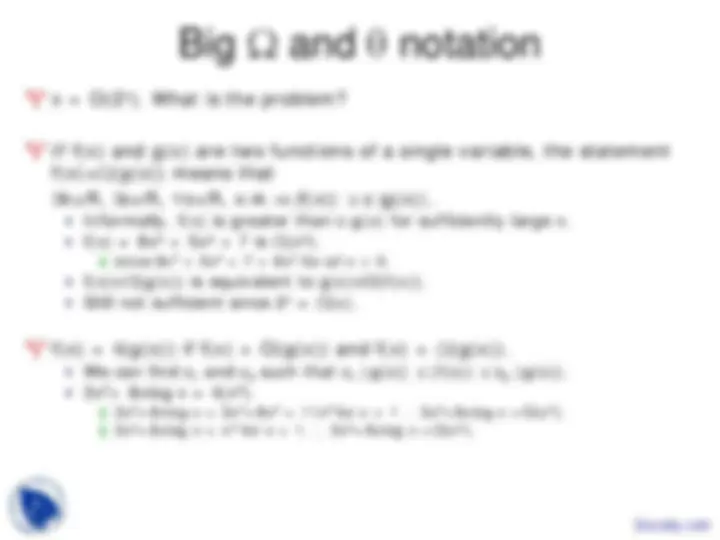
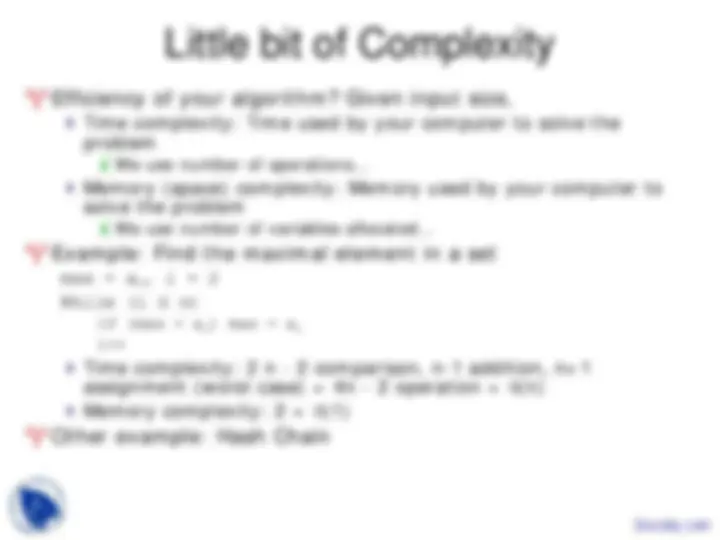


Study with the several resources on Docsity

Earn points by helping other students or get them with a premium plan


Prepare for your exams
Study with the several resources on Docsity

Earn points to download
Earn points by helping other students or get them with a premium plan
Community
Ask the community for help and clear up your study doubts
Discover the best universities in your country according to Docsity users
Free resources
Download our free guides on studying techniques, anxiety management strategies, and thesis advice from Docsity tutors
During the study of discrete mathematics, I found this course very informative and applicable.The main points in these lecture slides are:Algorithms, Finite Set of Precise Instructions, Performing Computation, Maximum Element, Linear Search, Binary Search, Endpoint of Search Interval, Binary Search Running Time, Growth of Functions, Measure Algorithms
Typology: Slides
1 / 19

This page cannot be seen from the preview
Don't miss anything!












List does NOT have to be sorted!
procedure linear_search ( x : integer; a 1 , a 2 , …, an : integers) i := 1 while ( i ≤ n and x ≠ ai ) i := i + 1 if i ≤ n then location := i else location := 0
{ location is the subscript of the term that equals x, or it is 0 if x is not found}
It takes 3 steps
It takes 4 steps
It takes 6 steps
It takes log 2 n steps
ch3.
Growth of Functions
The binary search takes log 2 n “steps”
Let’s say the binary search takes the following number of steps on specific CPUs: Intel Pentium IV CPU: 58* log 2 n / Motorola CPU: 84.4(log 2 n + 1)/ Intel Pentium V CPU: 44(log 2 n)/
As n increases, the other terms will drop out
The exponent on n will not
c g(x) is greater than f(x) for sufficiently large x. f(x) grows no faster than g(x), as x gets large.
Need to find k and c to show f(x)∈O(g(x)).
In other words, show that 3 x +7 ≤ c* x^2
For input size n = 1000
O(1) 1
O(log n) ≈
O(n) 103
O(n log n) ≈10^4
O(n 2 ) 106
O(n 3 ) 109
O(n 4 ) 1012
O(n c^ ) 10 3*c^ c is a consant
2 n^ ≈10^301
n! ≈10^2568
Proof) Take c = 1, k=1. Then, x 2 > x log x for all x > 1, since x log x = 0 when x = 1, while x 2 = 1.
Proof) Suppose x^2 is O(x log x). Then ∃ c and k such that c x log x ≥ x 2 for x > k. Note that c>2. Otherwise, cx log x < x 2 for x = 3. Consider x = c 3. Then lhs) cx log x = c 4 log c 3 = 2 c 4 log c rhs) x 2 = c 6. Since c>2, it is clear that c 2 > 2 log c. Therefore, cxlog x<x 2 for x=c 3. (Contradiction)
Efficiency of your algorithm? Given input size,
Time complexity: Time used by your computer to solve the problem We use number of operations… Memory (space) complexity: Memory used by your computer to solve the problem We use number of variables allocated…
Example: Find the maximal element in a set
max = a 1 , i = 2 While (i ≤ n) if (max < a (^) i ) max = a (^) i i++ Time complexity: 2 n - 2 comparison, n-1 addition, n+ assignment (worst case) = 4n - 2 operation = θ(n) Memory complexity: 2 = θ(1)
Other example: Hash Chain